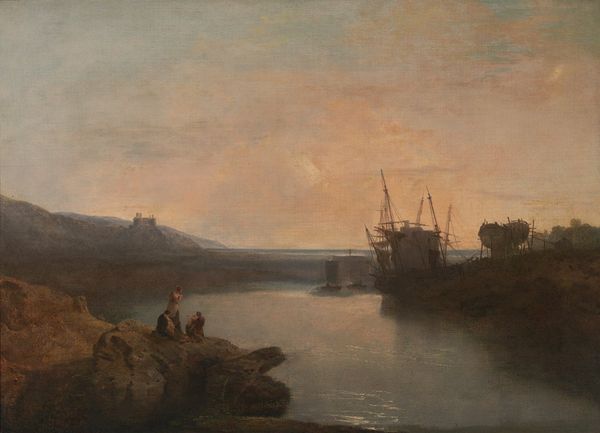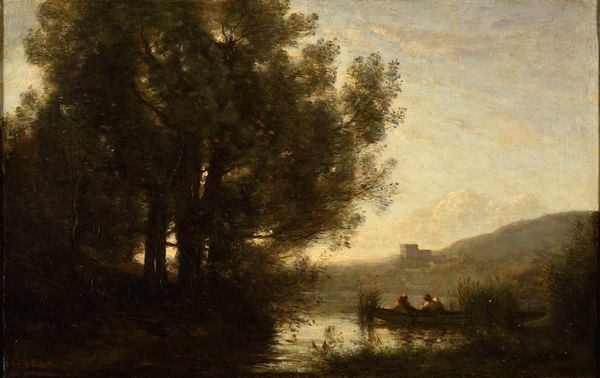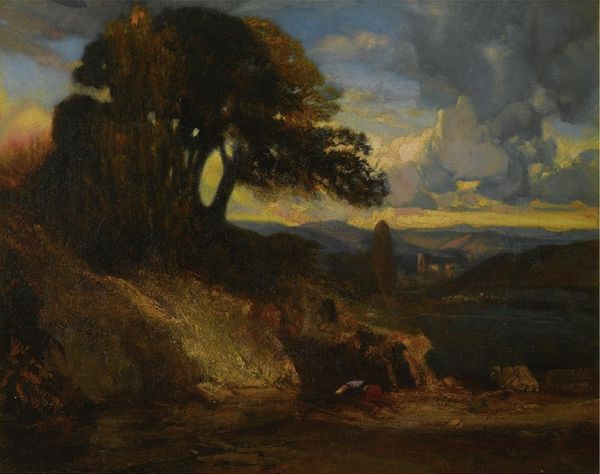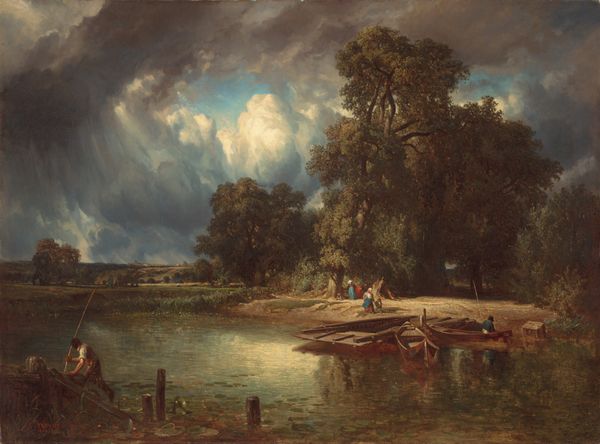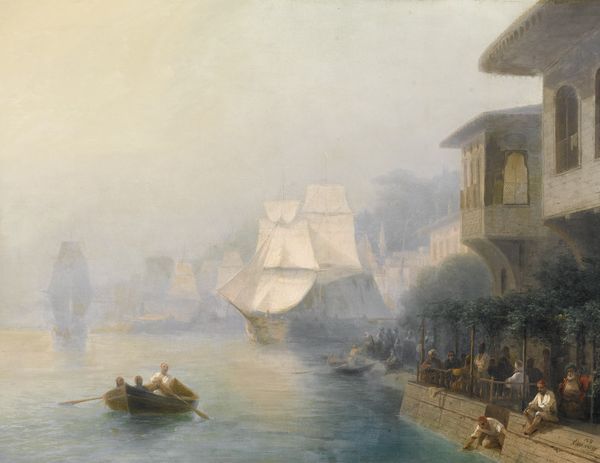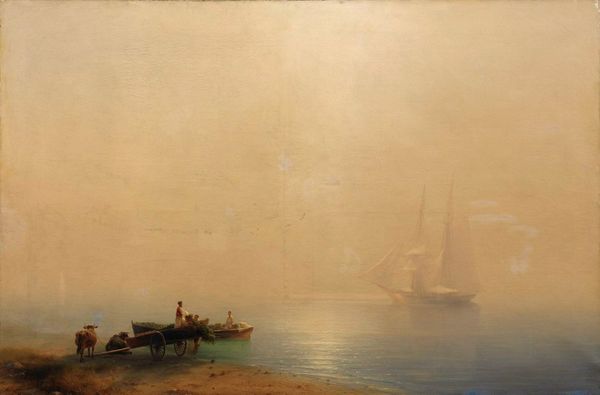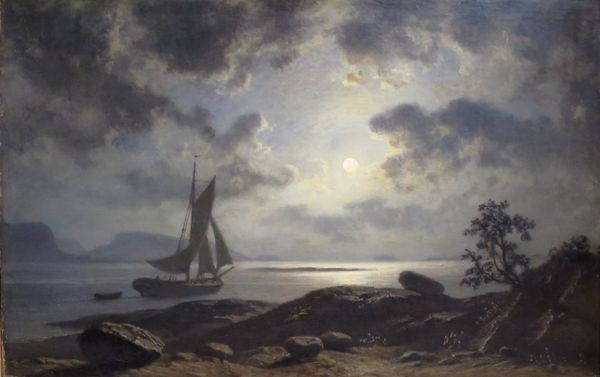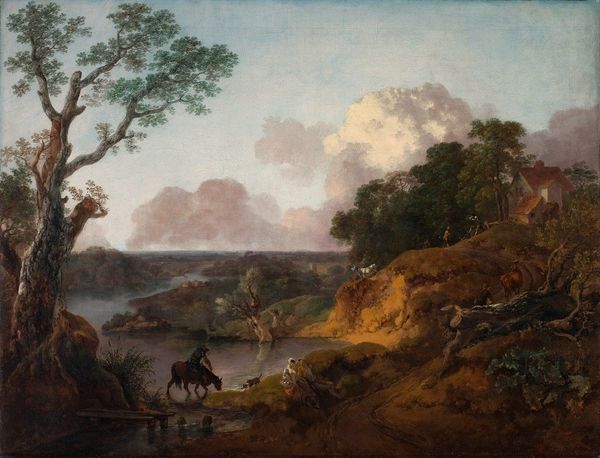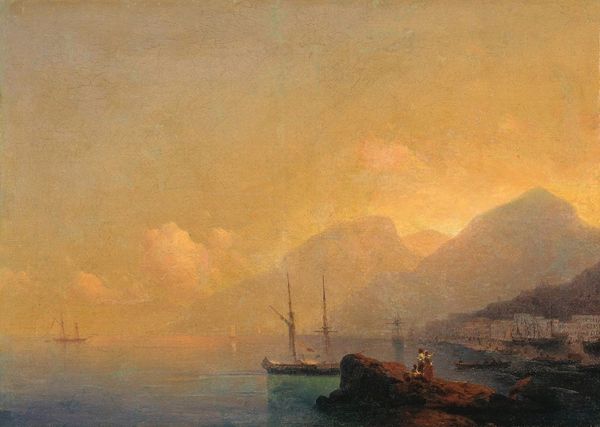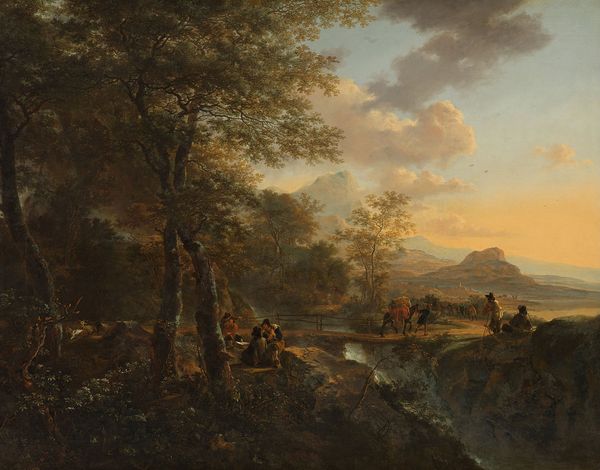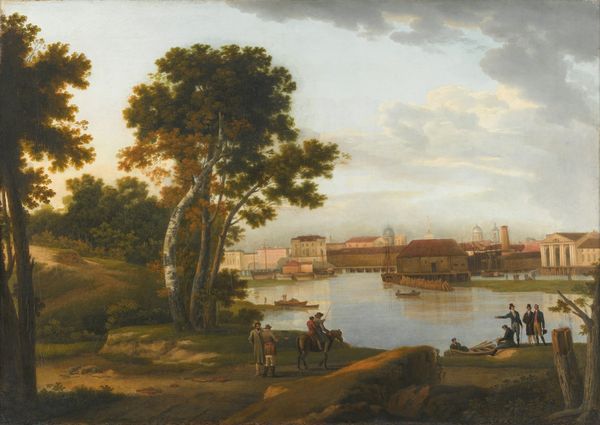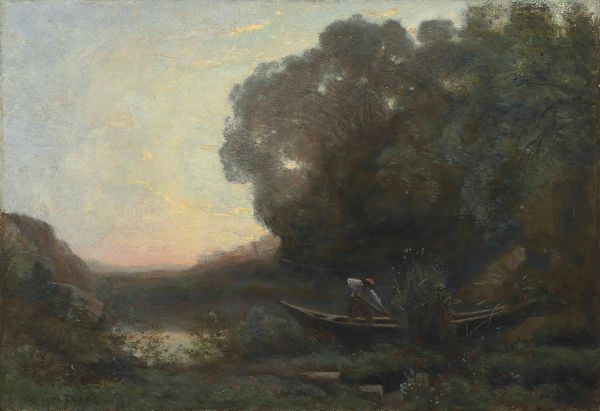
Dimensions: support: 686 x 889 mm
Copyright: CC-BY-NC-ND 4.0 DEED, Photo: Tate
Editor: Richard Wilson’s "Lake, Ruin and Pine Trees" has a dreamy, almost melancholic feel. What strikes me most is the way nature and classical ruins are intertwined. How do you interpret this work in its historical context? Curator: It’s fascinating how Wilson, like many of his contemporaries, used landscape to evoke a sense of the past and Britain’s place in it. What is the effect of placing ordinary people in a landscape with decaying architecture? Editor: I guess it prompts us to reflect on the passage of time, the transience of civilizations, and perhaps even a sense of British cultural identity in relation to classical antiquity? Curator: Precisely. Think about how the aristocracy at the time would have viewed themselves in relation to this landscape. The painting might invite reflection on their power. Editor: I never considered that angle. It's amazing how much social and political commentary can be embedded in what appears to be a simple landscape! Curator: Indeed, art often reflects and shapes the very culture it inhabits.
Comments
tate 6 months ago
⋮
http://www.tate.org.uk/art/artworks/wilson-lake-ruin-and-pine-trees-n06267
Join the conversation
Join millions of artists and users on Artera today and experience the ultimate creative platform.
tate 6 months ago
⋮
The motif of the temple by a lake recurs throughout Wilson's work as an image of Arcadian tranquillity. Temples were often used in this way in the landscaped parks of wealthy British aristocrats. The lake shown here may be one of the mysterious volcanic lakes near Rome, such as Lake Nemi, known since antiquity as 'Diana's Mirror' because of its glassy smooth surface. Another possibility is Lake Avernus, near Naples, believed by the ancient Romans to be the entrance to the Underworld. The ruin evokes ancient Roman civilisation, while the still waters encourage quiet contemplation of Italy in the present. Gallery label, September 2002
